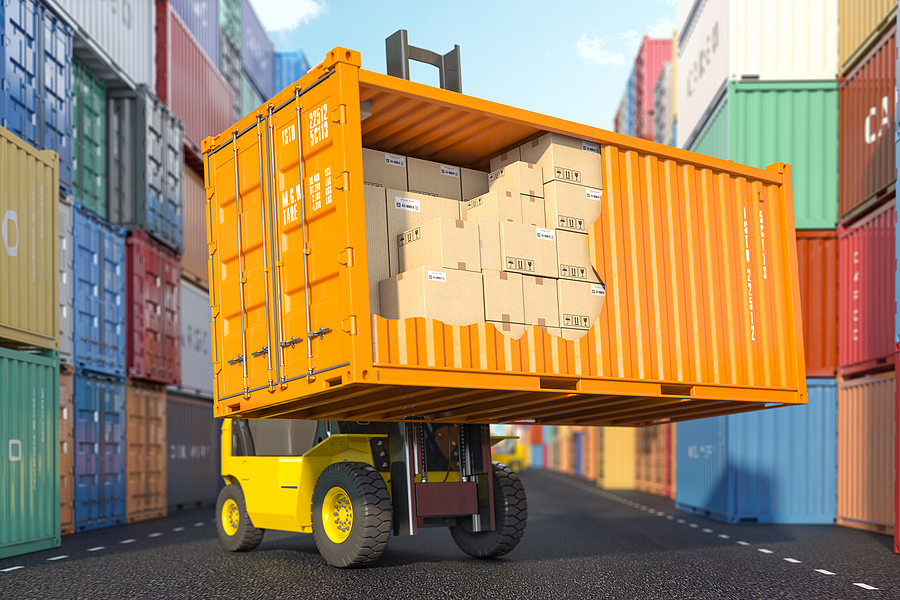Shipping containers play a crucial role in global trade, providing a secure and reliable means of transporting goods across oceans. Among the various container sizes available, the standard 20-foot container, also known as a "dry van," is one of the most commonly used options. In this article, we will explore the dimensions, capacity, and weight limits of a 20-foot shipping container, as well as its suitability for different types of cargo.
Understanding the Dimensions
The dimensions of a 20-foot container are typically measured using both the imperial and metric systems. It is important to consider both the exterior and interior dimensions when planning the packing and shipping of goods.
Exterior Dimensions
The exterior dimensions of a standard 20-foot container are as follows:
- Length: 20 feet
- Width: 8 feet
- Height: 8 feet 6 inches
Converting these measurements to the metric system, we have:
- Length: 6.10 meters
- Width: 2.44 meters
- Height: 2.59 meters
Interior Dimensions
The interior dimensions of a 20-foot container are slightly smaller due to the thickness of the container walls. These dimensions are as follows:
- Length: 19 feet 4 inches
- Width: 7 feet 9 inches
- Height: 7 feet 10 inches
In the metric system, the interior dimensions are:
- Length: 5.898 meters
- Width: 2.352 meters
- Height: 2.393 meters
Determining Usable Capacity
To assess the capacity of a 20-foot container, it is important to consider its usable volume. The usable capacity refers to the amount of space available for cargo after accounting for the container's structural elements.
The usable capacity of a standard 20-foot container is approximately 32.6 cubic meters. This measurement indicates the total volume of cargo that can be loaded into the container.
Pallet Capacity
Determining the number of pallets that can fit inside a 20-foot container is essential for efficient packing and transportation. The capacity varies depending on the type of pallet used.
Euro Pallets
Euro pallets, which have dimensions of 1.2 meters by 0.8 meters, can be stacked in the following manner within a 20-foot container:
- Rows along the length: 11 stacks
- Rows along the width: 2 stacks
It is important to ensure that the load does not hang over the sides of the pallets to maximize the container's capacity.
American Pallets
For American pallets, which have dimensions of 40 inches by 48 inches (1.016 meters by 1.219 meters), the base of a standard 20-foot container can hold up to 10 pallets. Similar to Euro pallets, it is crucial to avoid overhanging loads to optimize the container's space.
Maximum Load Capacity
Understanding the maximum load capacity of a 20-foot container is vital for compliance with shipping regulations and ensuring the safety of the cargo. The maximum load capacity depends on various factors, including shipping line restrictions, cargo type, and specific shipment details.
The unloaded weight of a 20-foot container is approximately 2,300 kilograms. In theory, it can be loaded to a maximum weight of 28 tons (25,400 kilograms). However, it is crucial to consult with the shipping line and consider any limitations or restrictions they may have.
Payload and Tare Weight
When discussing the weight of a 20-foot container, it is important to distinguish between its payload and tare weight. The payload refers to the total weight of the cargo that can be loaded into the container.
On the other hand, the tare weight refers to the weight of the empty container itself. For a 20-foot container, the tare weight is typically around 2,300 kilograms.
Advantages of Using a 20-Foot Container
The 20-foot container offers several advantages for shipping various types of cargo. Some of the key benefits include:
- Cost-Effective: 20-foot containers are generally more affordable than larger options, making them an attractive choice for smaller shipments or businesses with budget constraints.
- Versatility: These containers can accommodate a wide range of goods, from consumer products to industrial equipment, making them suitable for various industries.
- Ease of Handling: Due to their smaller size and weight, 20-foot containers are easier to handle during loading and unloading processes. This can lead to increased efficiency and reduced operational costs.
- Accessibility: 20-foot containers are widely available in ports and shipping depots worldwide, ensuring easy access to these containers for transportation needs.
Other Considerations
When planning to use a 20-foot container for shipping, it is essential to consider a few additional factors:
- Cargo Type: Ensure that the cargo you intend to ship is compatible with the dimensions and weight limits of a 20-foot container. Some oversized or heavy items may require alternative container sizes or specialized equipment.
- Packaging and Securing: Proper packaging and securing of cargo within the container are crucial to prevent damage during transit. Use suitable packing materials and consider utilizing securing devices such as straps or braces.
- Customs and Documentation: Familiarize yourself with the customs regulations and documentation requirements for the countries involved in your shipment. Adhering to these guidelines will help avoid delays and ensure a smooth shipping process.
In Conclusion
A 20-foot shipping container provides a reliable and cost-effective solution for transporting goods across the globe. By understanding its dimensions, capacity, and weight limits, businesses can optimize their shipping strategies and ensure the safe delivery of their products. Whether you are shipping consumer goods or industrial equipment, the 20-foot container offers versatility and accessibility to meet your transportation needs.


